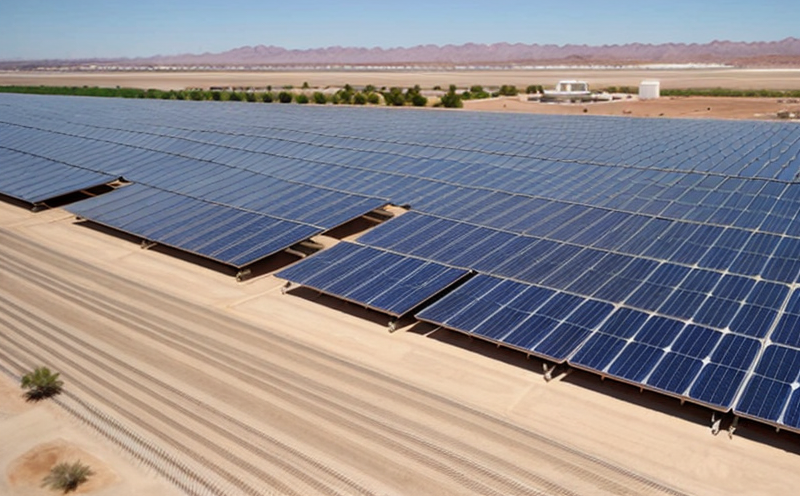EN 12975-2 Thermal Performance Testing of Solar Collectors
The EN 12975-2 standard is a cornerstone in the European Union for ensuring that solar thermal collectors meet stringent performance criteria. This test evaluates the energy conversion efficiency and overall performance of solar collectors, which are critical components in renewable energy systems. Solar collectors convert solar radiation into heat by absorbing sunlight on a solar absorber plate covered with a transparent glazing.
Thermal performance testing is essential for quality assurance and compliance purposes. It ensures that solar collectors perform as expected under various environmental conditions. This standard provides a framework to test the thermal efficiency of flat-plate collectors, evacuated tube collectors, and other types of solar thermal collectors used in domestic and industrial applications.
The test procedure outlined by EN 12975-2 involves subjecting the collector to controlled conditions that simulate real-world operating scenarios. This includes varying temperatures, solar irradiance levels, and flow rates through the collector. The performance is then measured based on heat transfer coefficients, outlet temperature, and other parameters.
The results of this test are crucial for manufacturers, installers, and buyers as they provide a standardized measure of how well a particular solar thermal collector will perform in different climates and environments. This ensures that consumers can make informed decisions about the most appropriate system for their needs, while also promoting market confidence through consistent quality standards.
The testing procedure typically involves setting up the solar collector under controlled conditions, measuring incoming and outgoing temperatures, and calculating heat losses. The test is conducted over a specified period, often ranging from several hours to days, depending on the specific requirements of the standard.
| Standard | Description |
|---|---|
| EN 12975-2:2018 | Thermal performance of solar collectors - Part 2: Flat plate collectors and evacuated tube collectors. |
| ISO 9806 | Performance testing of flat plate solar collectors |
| ASTM E1475-15 | Standard test method for thermal performance of evacuated tube solar collectors |
The results from this test are used to determine the collector's energy yield, which is a key factor in assessing its overall effectiveness. This helps ensure that the solar collector meets or exceeds the expected performance levels as defined by the standard.
Manufacturers and suppliers can use these test results to demonstrate compliance with regulatory requirements, ensuring that their products meet the necessary quality standards before being marketed or sold. Quality managers and procurement officers often rely on this testing to verify product specifications, while R&D engineers utilize it to refine designs and improve performance.
Applied Standards
- EN 12975-2:2018 - Thermal performance of solar collectors - Part 2: Flat plate collectors and evacuated tube collectors.
- ISO 9806 - Performance testing of flat plate solar collectors.
- ASTM E1475-15 - Standard test method for thermal performance of evacuated tube solar collectors.
Benefits
The benefits of adhering to the EN 12975-2 standard are manifold. It ensures that solar thermal collectors operate efficiently, thereby maximizing energy yield and reducing operational costs. This is particularly important in regions with varying weather conditions where performance can fluctuate significantly.
Compliance also enhances market confidence by ensuring consistency across different products from various manufacturers. Consumers can trust that any product meeting these standards will perform reliably under similar conditions. Additionally, it helps streamline the regulatory compliance process for manufacturers and suppliers, reducing administrative burdens.
The test results provide valuable data that can be used to improve product design and performance over time. This iterative process contributes to technological advancements in solar thermal technology, ultimately leading to more sustainable and efficient energy solutions.
Why Choose This Test
- Ensures compliance with international standards for solar thermal collectors.
- Provides a standardized method for evaluating performance under controlled conditions.
- Helps in identifying potential improvements to the design and manufacturing process of solar collectors.
- Saves time and resources by eliminating the need for repeated testing.
- Enhances market confidence through consistent quality assurance measures.
- Supports regulatory compliance, simplifying certification processes.
- Provides reliable data that can be used to improve product performance over time.
- Aids in making informed decisions about the most appropriate solar thermal collector for specific applications and environments.





